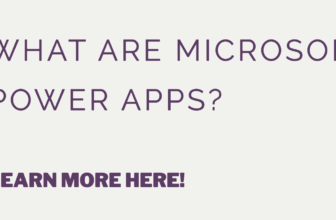What to Consider When Choosing a Work Management Platform

Working on projects isn’t easy, and that’s why choosing a work management platform ensures everything goes according to plan s you can beat your delivery timeline and budget. Apart from choosing the most experienced and skilled people to work on it, you need to ensure that they do so as a team. Project or work management tools can help eliminate most of the challenges that come up with working in teams.
Work management software makes the planning, execution, and monitoring of progress much easier. It ensures every team player is in sync with the progress and their contribution is factored in towards achieving the project’s objective. Plus, keeping track of deadlines, milestones, and record-keeping becomes a breeze.
When working on projects, the first part of your plan should go into choosing a work management platform that can serve you well according to how you operate.
What’s a Work Management Platform?
You already know that nowadays, there is software for literally anything. And work management isn’t any different. What’s a work management software, and how do you choose one? That’s a question that most project managers have to be conversant with to ensure they operate within project timelines, budgets, and objectives.
A project management platform is a robust and intuitive software built to help project managers plan, manage, and optimize available resources to meet the project or organization’s objectives.
Standard features of work management software
You don’t want a project that drags itself far behind schedule with every member complaining about their roles and milestones. Different project management tools have different capabilities, but usually, they all have the following general characteristics.
Planning and scheduling
The success of any project depends on how it is planned and the different schedules set for the milestones. When choosing a work management platform, you should ensure that it incorporates how to assign team members tasks to avoid misunderstanding when it comes to assigning new tasks.
Additionally, project management software generally allows managers to set deadlines, priorities, and milestones while notifying the members whenever a change is made.
Collaboration of team members

Work management platforms will also allow your team members to collaborate with the project and other team members for effective teamwork. When hundreds of contributors with different skills are working on a project, they must have access to everyone’s contribution to complement what they’re working on.
Schedule tracking
Projects are called so because of the timeline factor and the deliverables. Any standard work management software should allow you to schedule timelines and track progress in real-time. Every team member must have a clearly defined timeline and milestones that they must meet. The software should also highlight when deadlines are approaching so that the project doesn’t fall behind the set schedule.
Reporting and documentation
The essence of working with project management software is so that project managers can retrieve reports and documentation for every milestone. You don’t want to manage your projects on spreadsheets because an estimated 88 percent of such documents often have errors.
With a project management platform, data and reports will be available to team members. You’ll be able to access past project data, calendar events, expenses, and bills with ease. You should also find informative reports highlighting the various challenges that the project faces and possible quick solutions.
Resource management
Every project or work has a set of resources being utilized to ensure teams can conveniently work without interruptions. A task management platform should offer you a way to manage resources such as meeting rooms, tools, and materials utilized in project execution.
The tool should also help in calculating the costs of using the resources to understand how costly a project is. By finding a task management tool that does this, you can avoid wrangles that often arise from over-assignments, among other resource-related conflicts.
With a good tool, it’s easier to notice when certain resources are over-used and create new guidelines to limit exploitations. Project managers will be able to easily allocate resources to particular tasks and ensure that teams working on the task get enough facilities required to do their work.
Budget management

To ensure that projects don’t stall, operating within the set budgets is important. One important characteristic of project management tools is the ability to manage project budgets. These tools will also create a budget dashboard where you can track the expenditures in real-time. Other features include time billing, automated invoicing, and budget reports.
What to Look for When Choosing A Work Management Platform
Spending your time when choosing a work management platform is important to ensure you end up with the right tool that does what you need to achieve. Choosing the right one can be a daunting task, but it’s worth investing the time to find the best fit for your company.
The following is a tested and proven method you can use to choose a work management platform that addresses your project needs.
What are your major challenges and requirements?
While project management software is meant to handle projects, they’re not entirely meant to solve the same problem. That’s why you’ll find project management tools that work best for sales teams but don’t for software programmers.
Therefore, when choosing a work management platform, you must consider the type of challenges you face and the constraints you encounter.
Those who have worked on projects using a variety of project management apps over the past few months will know how fascinating it is to see how different teams prioritize different things. Some are focused on managing workflow, figuring out what gets done and what doesn’t, and staying on track with milestones. Others want a logical way of communicating about work in development. And some teams need a scheduling or budgeting element in their workflows.
You also need to identify the parameters or constraints you work within. Come up with a list of your constraints and try to eliminate ambiguity as much as possible. That will help you identify options that can be adopted and those that aren’t a must and hence can be done away with.
Consider your budget, size of the team, integration options available, user permissions and abilities, file storage requirement, guests’ access if required, and security needs.
Options for Research Project management tools:

By identifying your requirements and the parameters you have to work with, you’ll be better positioned to identify tools that will best fit your use case. When creating a list of possible options, don’t start by choosing a work management platform that you think can get the job done.
Instead, go directly to the users, that is, the team members who’ll take part in the project and ask for opinions. Ask them about the tools they’ve used in the past, their experiences with each, and their preferred platform.
Also, talk to fellow project managers in your organization or within your industry. Most likely, they’ve tested a couple and know which ones work best according to how they operate. Also, you can check the recommendations listed on websites within your industry.
Check the list below for some of the best work management platforms you can include on your list:
- Asana – delivers project flexibility.
- Zoho Projects
- Hive – Ideal for rapidly growing teams with big-size projects.
- Trello – Offers visualizations for project management.
- Yodiz – Best suited for scrum and agile software development projects.
Compile the list of possible project management tools you’re like to adopt and get set for the next stage.
Put each work management platform to the test
There’s no better way of understanding the capabilities of a tool other than trying it out. Most of the work management tools are web-based or at least have an internet-enabled operation. So go ahead and signup for a free trial account before choosing a work management platform of your choice.
If a tool doesn’t provide access to all premium features during the trial, you can request access from the developer’s customer support. Pursue this step only if you feel that the software has excellent capabilities that can benefit your project. If they aren’t willing to provide a complete package trial, find one that will.
Apart from testing a platform’s premium features, knowing what its lowest version can do is important. It will protect you from spending too much money on premium subscriptions while you can get some of the features on basic.

Find out if the extra features in the premium are nothing but extras. For those with experience, an intuitive GUI is very important out of all the features a tool can have. If you’ll rely on the platform to manage your projects, then performing the basic duties around the interface should be easy. You shouldn’t need to click several menus before doing a simple task.
Some of the things to examine when testing a work management platform include:
- Dashboard
- Creating Tasks
- Search Functions
- Notifications and Messages
- Customization Features.
- Accounting.
- Scheduling Features
- Customer Support.
Include your team in the management tools test
Remember, you’re not choosing a work management platform for yourself but for your team members. As such, they should be involved in the testing phase. Just as with deploying a new system, user acceptance is key to the success of any software.
You don’t have to include the entire team in the testing process, but you can select a group of individuals who can participate. This particular phase is crucial in uncovering various issues that can arise later when the tool is in actual use. It helps in avoiding problems before they happen.
Some of the ways you can test the app with your team to ensure everything is unearthed include:
- Assign different members varying permission levels to understand the rights of the administrators from those of team leaders and regular team members.
- Use real-life scenarios to create tasks, then assign them to various team members.
- Monitor the different notification features available and customize them for different members to see the outcome.
- Create different shared viewers and grant different members permission.
- Set milestones and deadlines for different tasks while marking some as complete to monitor how the application handles them.
To ensure you get the most accurate test results, include as many team players as possible so you can capture different scenarios as possible. Encourage the participants to take notes on various issues spotted while exploring the software’s capabilities.
Interview teams for feedback after tests

The testing phase can last for several weeks, or you can decide to frame it according to the project’s timeline. Once done with the testing process, you need to get the responses from various members who took part in the testing.
Getting feedback is important so you can understand which tools the team considers worth trying and which ones aren’t. It also avoids forcing down a system that team members aren’t comfortable with and can only result in rejection.
Before choosing a work management platform out of the possible considerations, ensure you get honest feedback from every participant. Some of the things to interview them on include:
- Their individual opinion on each of the tools tested. On this, find out if the project management tool would improve their work output or not.
- What are the challenges or good features they found out about the tools?
- How long did they take to get the hang of how the app works?
- What’s the likelihood of recommending the management platform to others?
This exercise is best done with a questionnaire rather than an oral interview. When the responses are recorded, it becomes much easier to decide after analyzing the responses. Also, revisit the list of challenges and constraints you’re trying to solve and see how the responses provided solve the problems.
Ease of sharing progress with clients
You’ll also have to factor in how your team coordinates with external parties and how the list created can help address the main bottlenecks to avoid work duplication. For instance, if you’re a digital marketing firm, you’d need a way to provide clients with simple and precise progress of the project without deviating from what the software allows.
Supporting coordination with other departments
Your team works towards achieving the overall goal of the organization. As such, there will be instances where you will need to work with other departments. In choosing a work management platform, also check how easy the tool allows coordination with non-team members but within the same organization.
For instance, if other departments rely on information from your team to execute other processes, without a proper notification medium, things will become slower.
Perform platform costs evaluation

Here, you want to look at the prices and offers from the various tools before adoption. When choosing a work management platform, don’t focus on the subscription cost per individual user. Instead, look at the time needed to implement the platform as well.
Also, look at your existing issues, opportunities lost, and the time wasted when not using the tool. Factor all these in financial terms and compare them to the total cost of adopting the tool. How will the tool change all the challenges experienced if you were to incorporate it into your processes?
Another important factor to consider is the payment timeframes given. Do they offer monthly and annual subscriptions? If you choose the annual plan, are there any discounts issued, and how significant will the amount saved be in the long run?
It’s always best practice to value the price of software to be less than the value it brings forth. If the value of the tool is similar to the cost of the licenses of the tool it’s replacing, and it’s a worthy investment. Generally, you should be able to prove that adopting the project management tool will save the business a significant amount of money apart from bringing in profits.
For a start, it’s best not to enter into long-term engagements. Instead, you can opt for a quarterly plan and then reevaluate the tool to see if it is a good fit.
Get the support of key team members
Choosing a work management platform means that people will have to make changes to their daily routines. When the key team leaders are included in the decision-making process, it will be easier for the team members to follow suit in adopting the tool.
One of the ways to include leaders in the process is to include some team members and leaders in the committee or team that are involved with choosing tools of work. Engage the team leaders in open conversation about the challenges of the existing tools and how the adopted platform will address the problems faced.

You can also use data from past implementations that were successful and demonstrate how your team can similarly adopt the new platform. Let the explanations given to team leaders address their concerns fully and eliminate any ambiguities.
Project management tool implementation
Once you’ve garnered enough support from the executives, you’re at liberty to proceed with the tool purchase. Most tool subscriptions are often purchased for set headcounts. The most recommended approach to choosing a work management platform is to buy licenses for about three teams.
Doing this can help you test the platform further, analyzing the features it offers and the shortcomings it has before rolling it out to the entire organization.
You’ll need to work with a project implementation plan to ensure there’s a smooth transition. Be ready to face resistance because not every user will readily welcome a change. Some of the things to include in your plan are:
- Implementation timeline – consider how long the implementation will last and whether you want to roll it out once and for all or in groups.
- User training – this is yet another important aspect that you shouldn’t overlook. Determine how the training will be done, who will provide it, and the training method adopted.
- Project advocates – user acceptance is not going to be 100 percent at the beginning. Therefore, you’ll need some of the users to champion the tool adoption by the rest of the team members.
- Integration with other tools – if your team relies on other applications, determine how the important integrations will be implemented and how you will carry them out.
After getting everyone onboard, setting a good example to be emulated by others is key. Ensure that you continuously use the tool. When team members do demonstrations, find out if the same can be done through the tool and advise them to use it instead.

Once everything is completed in choosing a work management platform, take a moment to reflect on the entire process. Have a look at areas where you could have used a different approach that would have been more effective. Also, look at the various aspects that faced difficulties or didn’t flow smoothly.
After gathering all this information, you can share it with the tool’s customer support team. They can use it to advise you on the best way to solve possible issues that might arise during the software use.
User feedback and follow-up
After implementation, you don’t stop at that – you need to evaluate users’ experience with the tool. You should do regular checks and follow-ups to find out what the teams’ experiences are with the software. This feedback is crucial as you can use it to implement changes where possible and improve the tool in the long run.
Final thoughts
Are you after one project management tool to sort out all your requirements? Or are you ready to use more than one to achieve different goals? If you want better reporting, clarity in management project milestones, and seamless communication between team members, an all-in-one tool is a better option.
Typically, work management platforms are built with an allowance to allow integration with other smaller tools to achieve certain things. If the tool you have adopted performs well in all other sectors except one, you can find an integration that can allow it to achieve whatever you want to do.
To conclude, when choosing a work management platform, go for one with most of the features you’re expecting. Generally, no single tool is perfect, but you can find one that comes closest to perfection with proper research. Also, you need to follow the right implementation plan to ensure that it faces as little resistance as possible.





